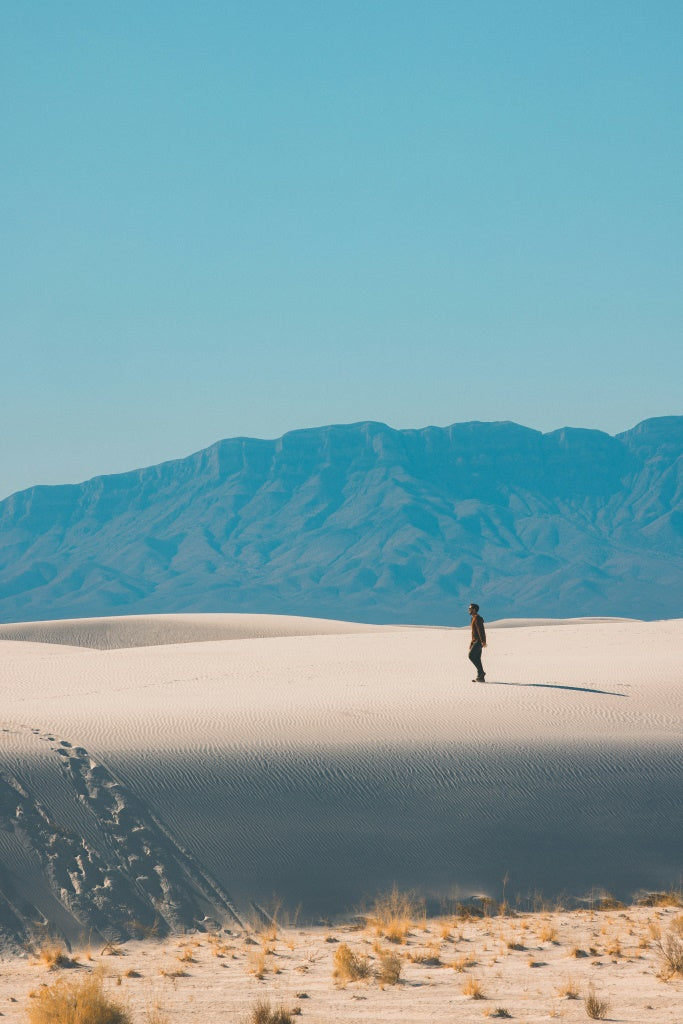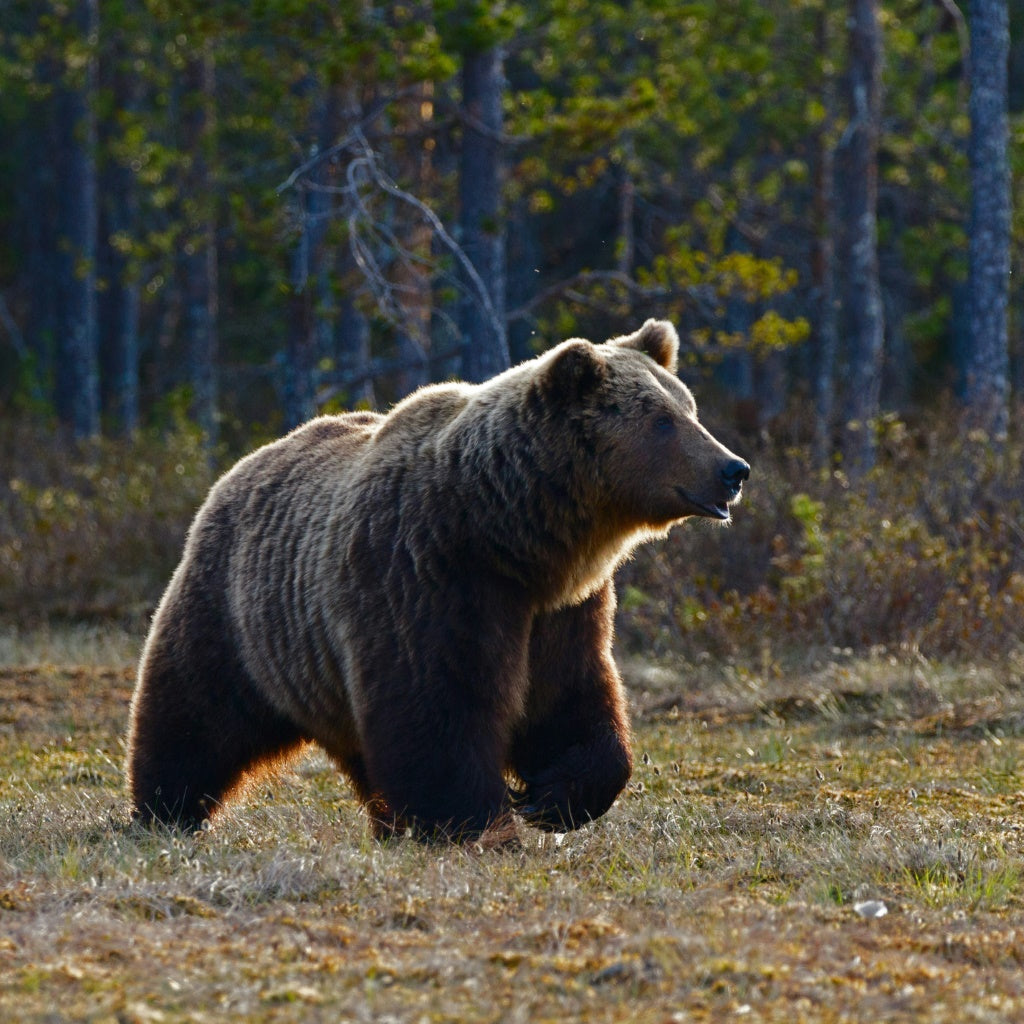WUDN
March-2024
Exploring the Great Outdoors: 5 Must-Visit Features of Every National Park in the United States
WUDN Outdoor Adventure (National Park Series)

Part 24 of Our National Park Series
White Sands National Park
National Park Series > Southwestern US > White Sands National Park
Back to the Table of Contents
Nestled in the heart of southern New Mexico, White Sands National Park is a mesmerizing landscape of shimmering gypsum dunes that stretch as far as the eye can see. This unique natural wonder offers visitors a chance to explore an otherworldly landscape of pristine white sands and azure skies. Here are the top five activities to experience during your visit:

Top 5 Outdoor Adventures in: White Sands National Park
1. Sledding and Sandboarding:
Experience the thrill of sledding down the dunes on a sand sled or sandboard. Rent a sled or sandboard from the visitor center or bring your own and slide down the soft, powdery slopes of the dunes. Whether you're a novice or experienced sandboarder, the dunes of White Sands offer endless opportunities for adrenaline-pumping fun and excitement.
2. Hiking:
Lace up your boots and hit the trails to explore the park's stunning landscapes and unique ecosystems. White Sands National Park offers a variety of hiking trails ranging from easy strolls to challenging treks, allowing visitors to immerse themselves in the natural beauty of the dunes. Don't miss popular hikes such as the Alkali Flat Trail, which takes you through the heart of the dune field, or the Interdune Boardwalk, where you can learn about the park's geology and wildlife.
3. Photography:
Capture the ethereal beauty of White Sands National Park through the lens of your camera as you explore its iconic landscapes and ever-changing light. From sunrise over the dunes to sunset on the horizon, the park offers endless opportunities for photographers to capture stunning images. Be sure to visit during the golden hours of sunrise and sunset to capture the dunes in the best light and witness the play of shadows and colors across the sands.
4. Stargazing:
Experience the magic of the night sky and marvel at the beauty of the stars above in one of the darkest skies in the United States. White Sands National Park is designated as a Dark Sky Park, offering unparalleled opportunities for stargazing and astrophotography. Set up a blanket, spread out a picnic, and gaze up at the Milky Way as it arcs across the sky, or join a ranger-led astronomy program to learn about the constellations and celestial phenomena.
5. Ranger Programs and Interpretive Talks:
Immerse yourself in the natural and cultural history of White Sands National Park by participating in ranger-led programs and interpretive talks. Join a guided walk or hike to learn about the park's geology, ecology, and wildlife, or attend a special event or workshop to delve deeper into the stories and traditions of the people who have called this land home for thousands of years.
From sledding down the dunes to hiking through the desert, White Sands National Park offers endless opportunities for outdoor adventure and exploration in one of New Mexico's most iconic landscapes. Whether you're exploring the dunes, photographing the sunset, or stargazing under the night sky, the park invites you to embark on an unforgettable journey through the heart of the Chihuahuan Desert.
In Carlsbad Caverns National Park, some of the top attractions that draw visitors from around the world include:
1. White Sands Dunes:
Explore the otherworldly landscape of the White Sands Dunes, the largest gypsum dunefield in the world. Stretching across 275 square miles of desert terrain, these dazzling white sand dunes create a surreal and ethereal landscape unlike anywhere else on Earth. Visitors can hike, sled, or simply wander through the pristine gypsum sand, marveling at the ever-shifting patterns and sparkling white vistas.
2. Interdune Boardwalk:
Take a stroll along the Interdune Boardwalk, a wheelchair-accessible trail that meanders through the heart of the dunefield. This easy half-mile loop offers stunning views of the surrounding dunes and provides interpretive signs that educate visitors about the unique geology, ecology, and cultural history of White Sands National Park. Along the way, keep an eye out for tracks left by desert wildlife and the delicate desert plants that thrive in this harsh environment.
3. Dune Life Nature Trail:
Embark on the Dune Life Nature Trail, a 1-mile loop trail that offers a deeper exploration of the desert ecosystem and its inhabitants. As you hike through the sandy terrain, you'll encounter a variety of desert plants, including yuccas, mesquite trees, and the iconic Soaptree yucca. Interpretive signs along the trail provide insights into the adaptations that allow these plants and animals to survive in the harsh desert environment, while offering opportunities for wildlife viewing and birdwatching.
4. Sunset Stroll:
Experience the magic of a White Sands sunset with a leisurely stroll through the dunes as the golden hour casts a warm glow over the landscape. The shifting sands take on vibrant hues of pink, orange, and purple as the sun dips below the horizon, creating a mesmerizing display of light and shadow. Whether you're capturing photographs, enjoying a picnic, or simply taking in the serene beauty of the desert at dusk, a sunset stroll through White Sands National Park is an unforgettable experience.
Some Real Wooden Style for Your Trip
We are working on more branded merch to accompany your trip. In the meantime, here is a pair of real wooden shades for some excellent style while you hike the deep-country of White Sands National Park .
How to Get To White Sands National Park
Getting to White Sands National Park, located in southern New Mexico, involves several transportation options depending on your starting point:
1. By Car: Driving is the most common and convenient way to reach White Sands National Park. The park is located about 15 miles southwest of Alamogordo, New Mexico, and is accessible via U.S. Highway 70. From Alamogordo, simply follow signs for White Sands National Park along Highway 70 until you reach the park entrance. If you're traveling from other cities in New Mexico or neighboring states, you can reach the park via major highways such as Interstate 10 or U.S. Highway 54.
2. By Air: The nearest major airport to White Sands National Park is El Paso International Airport (ELP) in El Paso, Texas, located approximately 90 miles west of the park. From the airport, you can rent a car and drive to the park, which takes about 1.5 to 2 hours depending on traffic and weather conditions. Alternatively, you can fly into Albuquerque International Sunport (ABQ) in Albuquerque, New Mexico, which is about 200 miles northeast of the park, and then drive to the park, which takes about 3 to 4 hours.
3. By Bus: There is no direct bus service to White Sands National Park, but you can take a Greyhound bus or other long-distance coach service to nearby cities such as Alamogordo or Las Cruces, New Mexico. From there, you can rent a car or arrange for local transportation to take you to the park.
4. By Tour: Some tour companies offer guided tours to White Sands National Park from nearby cities or towns. These tours typically include transportation to and from the park, as well as guided activities and sightseeing opportunities. If you prefer not to drive yourself, joining a guided tour can be a convenient way to explore the park and learn about its natural and cultural history from knowledgeable guides.
Once you've arrived at White Sands National Park, you can explore the park's dunes, trails, and visitor center by car or on foot. Be sure to check road conditions, weather forecasts, and park regulations before you go, especially during the summer months when temperatures can be extreme and sandstorms may occur. Additionally, the park may have limited hours or closures during certain times of the year, so it's important to plan ahead and check the park's website or contact the visitor center for the most up-to-date information.
History and Creation of White Sands National Park
White Sands National Park, located in southern New Mexico, is renowned for its stunning landscape of gleaming white gypsum sand dunes. The park's history and creation are deeply intertwined with the unique geology and cultural heritage of the region.
The story of White Sands dates back millions of years, when a vast inland sea covered much of what is now the American Southwest. Over time, the sea evaporated, leaving behind vast deposits of gypsum, a mineral composed of calcium sulfate. As the climate shifted and the land rose, the gypsum deposits were exposed to the elements, and wind and water began to erode the soft mineral, creating the shimmering white sand dunes that define the landscape of White Sands National Park today.
For centuries, the region has been inhabited by Indigenous peoples, including the Mescalero Apache, who have long revered the area as a sacred and spiritual place. The gypsum dunes provided a source of water, food, and shelter, as well as materials for crafting tools and ceremonial objects. The Mescalero Apache continue to maintain cultural connections to the land, and their traditional knowledge and practices are integral to the park's management and interpretation.
In the late 19th and early 20th centuries, the White Sands region attracted the attention of explorers, scientists, and settlers, who marveled at its otherworldly beauty and sought to exploit its natural resources for agriculture, mining, and recreation. However, it soon became apparent that the fragile desert ecosystem was vulnerable to damage from human activities, prompting calls for conservation and protection.
In 1933, White Sands was designated as a national monument by President Herbert Hoover, recognizing its unique geological features and cultural significance. Over the following decades, efforts to preserve and manage the monument continued to gain momentum, culminating in its redesignation as a national park in 2019, making it the newest national park in the United States.
Today, White Sands National Park encompasses over 275 square miles of protected land, including the world's largest gypsum dunefield and a diverse array of desert flora and fauna. The park offers opportunities for hiking, sledding, camping, stargazing, and wildlife viewing, as well as educational programs and interpretive exhibits that highlight the park's natural and cultural history.
As visitors explore the pristine white sands and towering dunes of White Sands National Park, they are invited to connect with the land, the sky, and the timeless rhythms of nature, experiencing firsthand the beauty and wonder of this unique desert landscape.
/Fin. White Sands National Park
These are just a few of the many incredible attractions awaiting visitors at White Sands National Park. Whether exploring the vast dunefield, learning about the unique desert ecosystem, or witnessing the beauty of a desert sunset, the park offers endless opportunities for adventure, discovery, and appreciation of the natural world.

Outdoor Adventure Giveaway
Get Some Real Wooden Style for Your Next Outdoor Adventure
The April Edition of the Outdoor Adventure Giveaway is Closed.
Winner Selected on 5/1/2024
CONGRUTALATIONS: Ted P from Wisconsin

How to Prepare for a Visit to a US National Park
Our top-10 list to get you prepared and a bonus section on Bears!
Read More
20 Must Have Gadgets for Your Next Outdoor Adventure
Our curated list to keep you safe and productive on your next outdoor adventure.
Read More
About the Author

Jaimeleigh Christian
Jaime is passionate about the outdoors and traveling throughout these gorgeous United States. Especially National Parks in the Pacific Northwest.
Tags
Travel
Outdoor Adventure Series
National Parks
Tour Guide
You May Also Like
Want To Receive More Outdoor Adventures?
Follow us to receive the latest adventures





